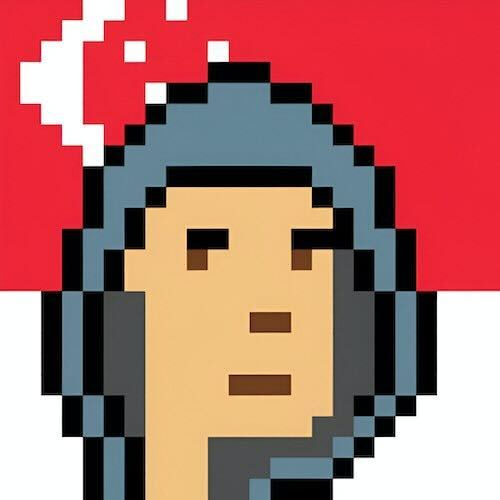Confidence, Collaboration, and Code: Tze Wei’s Protocol Camp Story
Tze Wei joined Protocol Camp and co-created TrustTrack. He shares how struture, team diversity and mentorship made the journey impactful—and why this is the ideal starting point for serious builders.
Hey Tze Wei! Can you briefly introduce yourself?
My name is Tze Wei, and I've been involved in Web2 projects across different sectors for over a decade. I've taken on various roles—Project Manager, Business Analyst, Software Developer—so I've got a pretty diverse background in Web2. Over the past year, I decided to commit myself to learning more about Web3 and its potential as an industry of the future. Joining Protocol Camp was the first step in my journey to deepen my understanding and skill set in Web3.
Experience & Growth
What motivated you to join Protocol Camp in the first place?
I wanted hands-on experience building on blockchain. I initially attended Web3 conferences to understand the space, but quickly found it overwhelming because there are so many moving parts and everything changes rapidly. I needed a more structured environment, and that’s what Protocol Camp offered—an opportunity to build something real with guidance. I also appreciated having experienced technical and business mentors to evaluate not just the feasibility of our blockchain implementation but also its commercial viability.
What was your favorite part or a memorable moment during Protocol Camp?
One of the most memorable moments was demo day—seeing all the teams present the final state of their projects after months of work. It felt like the culmination of everything we worked toward. Also, the informal interactions with other participants and the ShardLab team were incredibly enriching and memorable.
Innovation & Collaboration
Can you explain the product your team worked on—TrustTrack? Also, what’s one thing you built, learned, or overcame that surprised you?
Our team built TrustTrack, a charitable giving platform that publishes donation details onto the Aptos blockchain. Initially, we had to figure out how everything fit together—from the Web2 front end to blockchain integration—but it became clear fairly quickly. The team was remote and diverse, so from the start, TrustTrack was designed with global perspectives in mind.
What surprised me most was how fast we could build and iterate. I expected blockchain development to be slow and complex, but we were able to build a working prototype in a month and improve it rapidly with user feedback—even though I had almost no blockchain programming experience before Protocol Camp.
How was it working with people from different countries and cultural backgrounds?
We brought different skills and perspectives, which led to really interesting discussions. TrustTrack wasn’t our first idea; it evolved from many conversations. Because of our cultural and geographic diversity, we built something that made sense universally. It helped us think more holistically, beyond the scope of a single country. If you want to build a globally scalable product, team diversity really matters.
Do you think having a team with diverse roles (not just developers) benefited your project?
Yes, definitely. Most hackathons skew heavily toward developers. At Protocol Camp, our team had two developers and one designer. I don’t think we would have come up with TrustTrack without the designer. Beyond UX/UI, the designer provided critical non-technical insights—like product viability, go-to-market strategies, and user targeting. That kind of diversity really strengthened our project.
What’s something unique about Protocol Camp compared to other hackathons you’ve attended?
Unlike typical hackathons where you only have 2–3 days to build a proof of concept, Protocol Camp gives you a much longer time frame. That allows you to validate your ideas, test them in real-world scenarios, and build something meaningful. You feel a stronger sense of ownership and responsibility. Some teams even continue working on their projects as startups. That longevity and depth of experience is what sets Protocol Camp apart.
Future Impact & Recommendation
What are you currently doing after Protocol Camp, and are you planning to continue in Web3?
Protocol Camp gave me the confidence to build on blockchain, so afterward, I continued exploring other aspects of Web3. I'm particularly interested in the intersection of Web3 and AI. I’ve been looking into projects in this space—either to contribute to or to emulate for building my own. I’m exploring both employment opportunities and ideas worth developing as solo or startup projects. It's an exciting time because everyone is still early in the Web3 space.
What would you say to someone who’s unsure about joining Protocol Camp? Would you recommend it?
Yes, absolutely. There’s no downside. You get access to dedicated technical and business mentors, and a structured framework to build your project without distractions. You invest in yourself, learn blockchain programming, and come out more confident in Web3. If you're serious about understanding Web3, this is the place to start. The only limitation is whether you're lucky enough to be accepted.
We hope you enjoy this interview with Tze Wei!
If you’re interested in joining our upcoming cohort in August 2025, visit our website and subscribe to the mailing list at the bottom of the page to stay updated.


